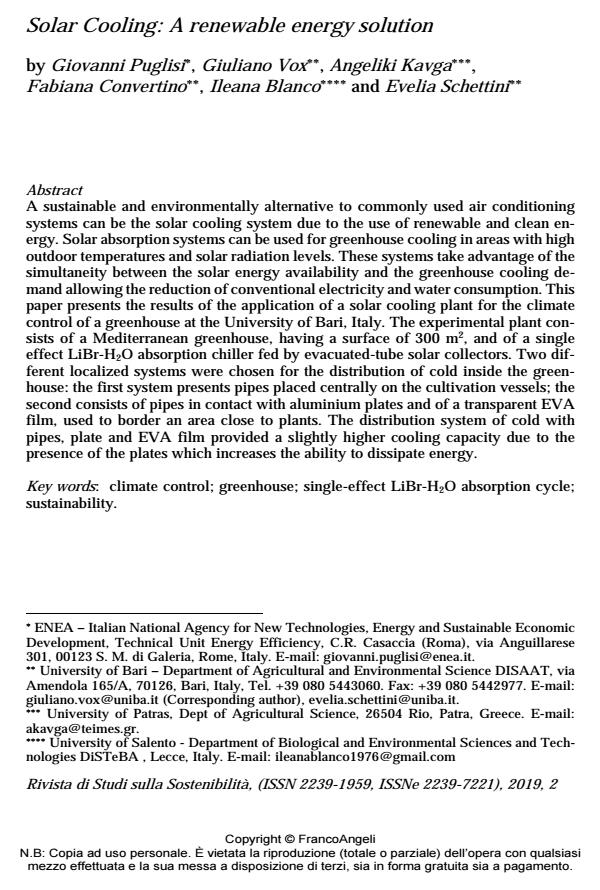Solar Cooling: A renewable energy solution
Titolo Rivista RIVISTA DI STUDI SULLA SOSTENIBILITA'
Autori/Curatori Giovanni Puglisi, Giuliano Vox, Angeliki Kavga, Fabiana Convertino, Ileana Blanco, Evelia Schettini
Anno di pubblicazione 2020 Fascicolo 2019/2 Suppl.
Lingua Inglese Numero pagine 17 P. 231-247 Dimensione file 496 KB
DOI 10.3280/RISS2019-002-S1015
Il DOI è il codice a barre della proprietà intellettuale: per saperne di più
clicca qui
Qui sotto puoi vedere in anteprima la prima pagina di questo articolo.
Se questo articolo ti interessa, lo puoi acquistare (e scaricare in formato pdf) seguendo le facili indicazioni per acquistare il download credit. Acquista Download Credits per scaricare questo Articolo in formato PDF

FrancoAngeli è membro della Publishers International Linking Association, Inc (PILA)associazione indipendente e non profit per facilitare (attraverso i servizi tecnologici implementati da CrossRef.org) l’accesso degli studiosi ai contenuti digitali nelle pubblicazioni professionali e scientifiche
A sustainable and environmentally alternative to commonly used air conditioning systems can be the solar cooling system due to the use of renewable and clean energy. Solar absorption systems can be used for greenhouse cooling in areas with high outdoor temperatures and solar radiation levels. These systems take advantage of the simultaneity between the solar energy availability and the greenhouse cooling demand allowing the reduction of conventional electricity and water consumption. This paper presents the results of the application of a solar cooling plant for the climate control of a greenhouse at the University of Bari, Italy. The experimental plant consists of a Mediterranean greenhouse, having a surface of 300 m2, and of a single effect LiBr-H2O absorption chiller fed by evacuated-tube solar collectors. Two different localized systems were chosen for the distribution of cold inside the greenhouse: the first system presents pipes placed centrally on the cultivation vessels; the second consists of pipes in contact with aluminium plates and of a transparent EVA film, used to border an area close to plants. The distribution system of cold with pipes, plate and EVA film provided a slightly higher cooling capacity due to the presence of the plates which increases the ability to dissipate energy.
Parole chiave:Climate control; greenhouse; single-effect LiBr-H2O absorption cycle; sustainability.
Giovanni Puglisi, Giuliano Vox, Angeliki Kavga, Fabiana Convertino, Ileana Blanco, Evelia Schettini, Solar Cooling: A renewable energy solution in "RIVISTA DI STUDI SULLA SOSTENIBILITA'" 2 Suppl./2019, pp 231-247, DOI: 10.3280/RISS2019-002-S1015